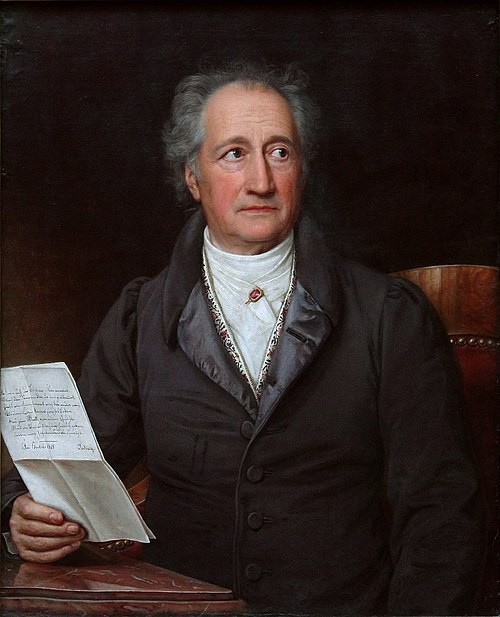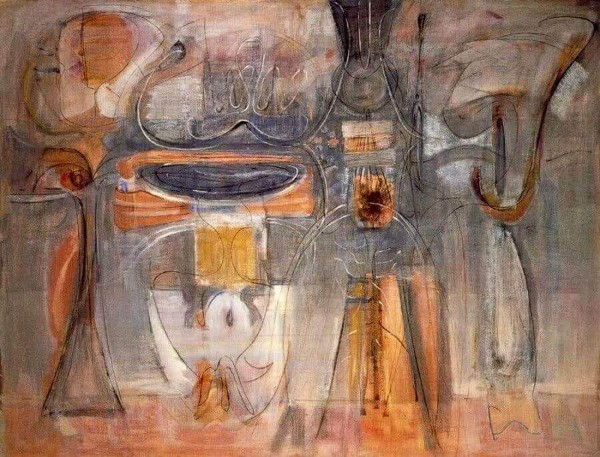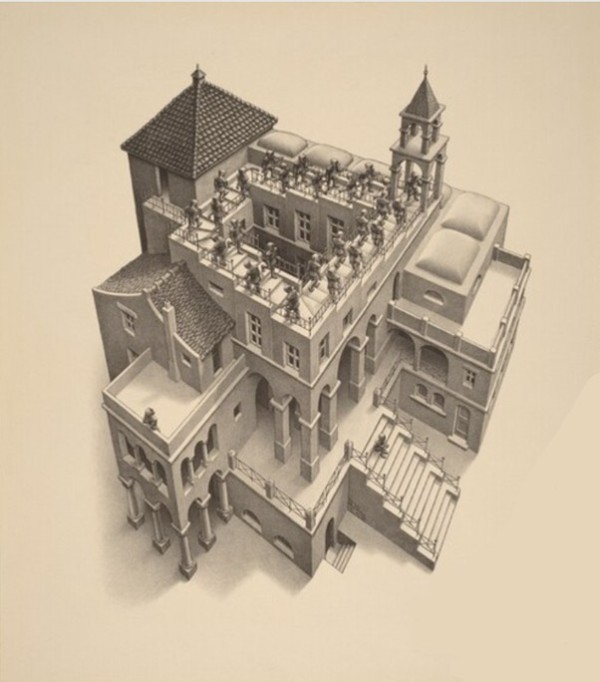Inspirations Behind Simon Holt’s Tauromaquia
The Spanish artist Francisco Goya created a series of 33 prints on the theme of bullfighting, La Tauromaquia, and published them in 1816. He was in the middle of working on his series The Disasters of War when he broke off work on it to create the bullfighting series.
Although his other series, Los Caprichos (1797–1798) and The Disasters of War (1810–1820), were seen as politically sensitive and were rarely seen, La Tauromaquia was on a popular subject and a run of 320 copies was created, although it did not meet with particular success when sold.
All aspects of bullfighting were pictured, from capturing the bulls in ancient Spain, the habits of the Moors in bull hunting, and then its creation as a sport, with capes made from the Moors’ burnouses, to the invention of the banderillas.
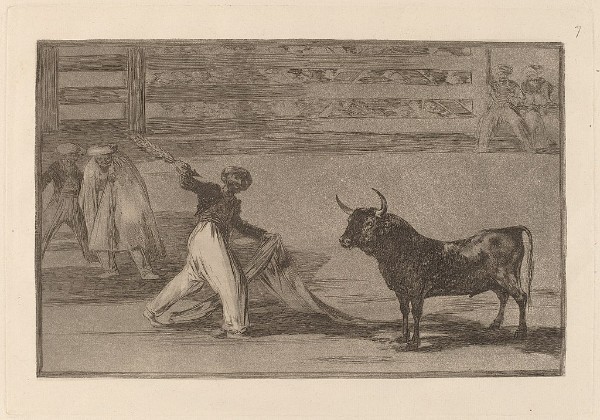
Goya: La Tauromaquia: Νο. 7: Origen de los arpones o banderillas (“Origin of the harpoons or banderillas”), 1816
(Washington, DC: National Gallery of Art)
The skill of the bullfighter in avoiding the deadly horns of the bull is the focus of No. 14.
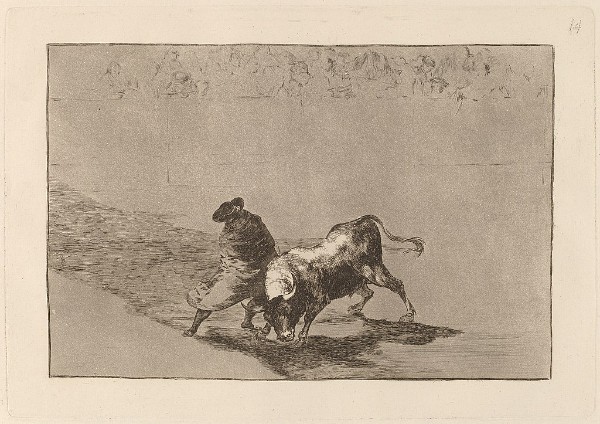
Goya: La Tauromaquia: Νο. 14: El diestrisimo estudiante de Falces, embozado, burla al toro con sus quiebros (“The dexterous student of Falces, embossed, tricks the bull with his breaks”), 1816 (Washington, DC: National Gallery of Art)
The artistic escapes were also pictured, in what must have been a particularly dramatic move in No. 20.
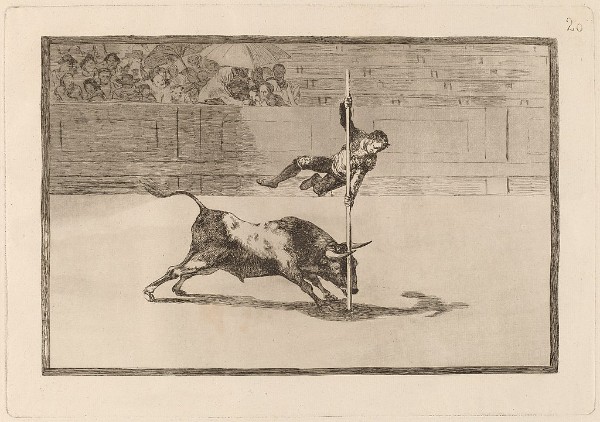
Goya: La Tauromaquia: Νο. 20: Ligereza y atrevimiento de Juanito Apiñani en la de Madrid (“Lightness and boldness of Juanito Apiñani in Madrid’s (“plaza”)), 1816 (Washington, DC: National Gallery of Art)
Goya often takes a unique view, such as behind the fleeing audience who have found themselves too close to the action (No. 21). One bullfighter he focused on was the famous Pepe Illo, showing him in action and his death, by bull, at the end of the Tauromaquia series.
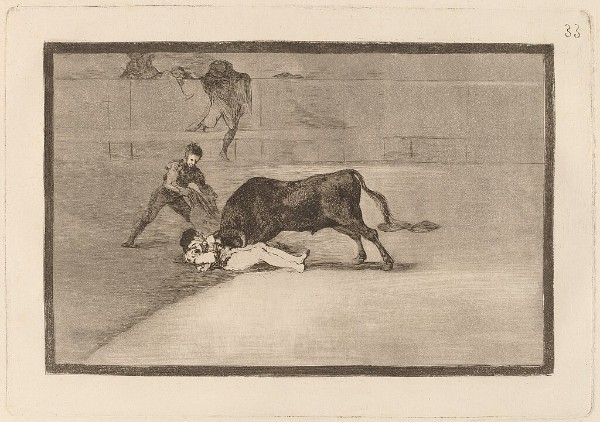
Goya: La Tauromaquia: Νο. 33: La desgraciada muerte de Pepe Illo en la plaza de Madrid (“The disgraceful death of Pepe Illo in Madrid’s plaza”), 1816 (Washington, DC: National Gallery of Art)
Goya was fascinated with the sport and even did a self-portrait of himself in a bullfighter’s suit.

Goya: Self-portrait in the Studio, between 1790 and 1795 (Real Academia de Bellas Artes de San Fernando)
English composer Simon Holt used the series as the inspiration for his piano work of the same name, Tauromaquia. He picks up on two primary aspects of Goya’s images: their darkness and violence, and uses the piano as both a percussion instrument and a melodic instrument to convey these aspects through his music.
Simon Holt: Tauromaquia (Rolf Hind, piano)
The work that Holt used as his focus was the death of Pepe Illo. José Delgado Guerro (aka Pepe-Hillo or Pepe Illo,1754–1801) was important in the development of the sport of bullfighting. He made his ring debut in 1769 when he was 15, entering as a novice, and was recognised officially as a bullfighter in 1774, when he was 20.
His style was considered unorthodox, matching subtle moves and reckless disregard. His fans loved him, and his fellow fighters hated him. The bullfighter Pedro Romero, shown in No. 30, thought a true bullfighter should be still from the waist down and should only use his hands.
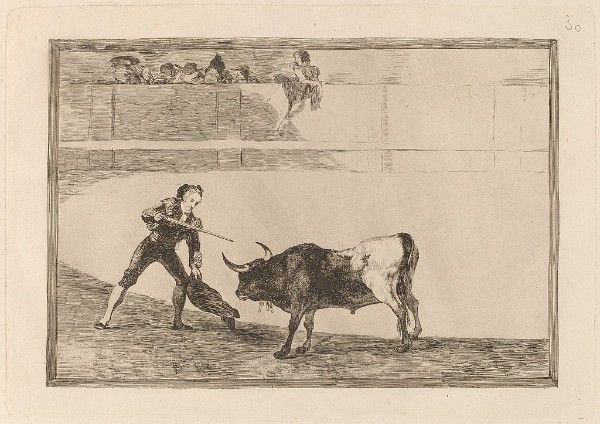
Goya: La Tauromaquia: Νο. 30: Pedro Romero matando a toro parado (“Pedro Romero slaying a standing bull”), 1816
(Washington, DC: National Gallery of Art)
To counter Romero’s criticism, Pepe Illo published his treatise Tauromachy or the Art of Bullfighting, in 1796, as if to prove that he did, indeed, know the rules.
His death came on 11 May 1801 when he was gored twice by a bull with the name Barbudo (The bearded one). His death caused a great outcry in Madrid, and, along with being memorialised by Goya 15 years after the event, was also mentioned in the private correspondence of Queen Maria Luisa.
Holt’s piano work ends with the death of Pepe Illo.
For more of the best in classical music, sign up for our E-Newsletter

